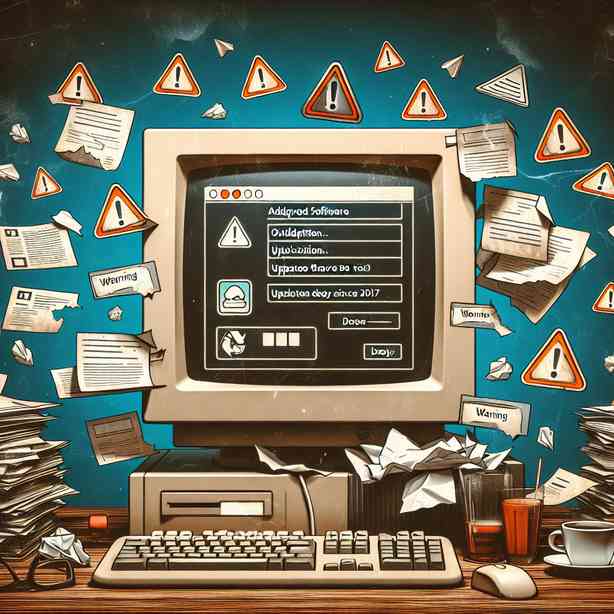
In today’s technology-driven world, software is a crucial component of everyday life, influencing personal productivity, business operations, and global communications. However, many individuals and organizations tend to overlook the importance of keeping their software updated. You might own software that hasn’t seen an update since 2017, and while it may still function adequately for your current needs, this situation can lead to a host of issues that go beyond mere inconvenience.
First and foremost, security is one of the most critical reasons for updating software regularly. Cybersecurity threats are continuously evolving, and attackers are always on the lookout for vulnerabilities in outdated systems. Software that has not been updated may lack the necessary security patches that protect against vulnerabilities. Once a weakness is identified in an older version, it becomes a prime target for exploits by hackers. By not updating your software, you essentially leave your systems open to potential attacks, which could lead to data breaches, financial loss, and serious damage to your reputation.
In addition to security risks, outdated software can also impede productivity. Newer software versions often come with enhanced features and functionalities designed to streamline operations and improve user experience. If you’re still using software that hasn’t seen an update in several years, you might be missing out on tools that can help automate tasks, reduce steps in critical processes, and enhance overall efficiency. Moreover, newer software typically offers improved compatibility with other systems and applications, which is essential in today’s interconnected digital landscape.
Furthermore, software vendors continually work on providing updates that not only increase security but also fix bugs and issues discovered in previous releases. Newer versions of software benefit from ongoing feedback from users, which leads to refinements that improve usability. By clinging to older software, you might be grappling with established bugs and limitations that could have been resolved by installing a more recent version.
Compatibility issues also arise from using outdated software. In many cases, newer operating systems, browsers, and hardware may not effectively support older software versions. This can lead to a myriad of problems such as crashes, slow processing times, or even an inability to run the software altogether. As technology advances, ensuring that your software is compatible with the latest platforms is essential for seamless functionality.
Another important consideration is that many software vendors eventually discontinue support for older versions. If you’re using a product that hasn’t been updated since 2017, you may find that the vendor has stopped providing technical support, leaving you without access to assistance when problems arise. This lack of support can be particularly problematic in critical situations where immediate fixes are required to keep your operations running smoothly.
In the business context, relying on outdated software can have ramifications that extend beyond individual productivity. It can impact collaboration among teams, hinder the ability to share information across platforms, and restrict communication with clients or partners. Modern software solutions often integrate seamlessly with other tools and systems, promoting productivity and collaboration. Staying updated ensures that organizations can leverage these advancements to their full potential.
Moreover, regulatory compliance can be a significant concern for businesses, especially in industries that prioritize data protection and privacy standards. Many software updates include elements that help organizations comply with changing laws and regulations. For instance, updates may introduce features designed for better data encryption, user consent management, or audit trails. Failing to keep up with these updates may expose your organization to compliance risks and potential penalties.
In addition to these practical considerations, maintaining updated software can also foster a culture of continuous improvement within an organization. It encourages a mindset that values adaptation and learning, two essential elements for thriving in an increasingly dynamic environment. Encouraging team members to stay current with the software they use not only aids individual performance but collectively raises the standards of work within the organization.
Before embarking on comprehensive updates, it’s prudent to conduct an audit of your software. Identify which applications have fallen behind in their update cycles, assess how critical each one is to your daily operations, and examine the potential risks involved in continuing to use these outdated versions. For systems that are obsolete, making the transition to more current solutions may be essential.
Training is another crucial aspect to consider when updating software. Alongside performing updates, organizations must invest time and resources to educate their staff about new features and functionalities introduced in the latest releases. Proper training ensures that users can maximize the benefits of newly updated software, thereby achieving a smoother transition and reduced resistance to change.
In conclusion, the truth about that software you haven’t updated since 2017 is that it likely poses significant security, productivity, and compatibility risks. By taking the time to assess your current software landscape, you set the stage not just for improved functionality, but you also protect yourself and your organization from potential vulnerabilities. The move to keep your software updated is not merely a best practice but a critical part of risk management and operational excellence in today’s fast-paced digital environment. By committing to regular updates and incorporating robust training practices, you pave the way for a more secure, efficient, and productive future.


